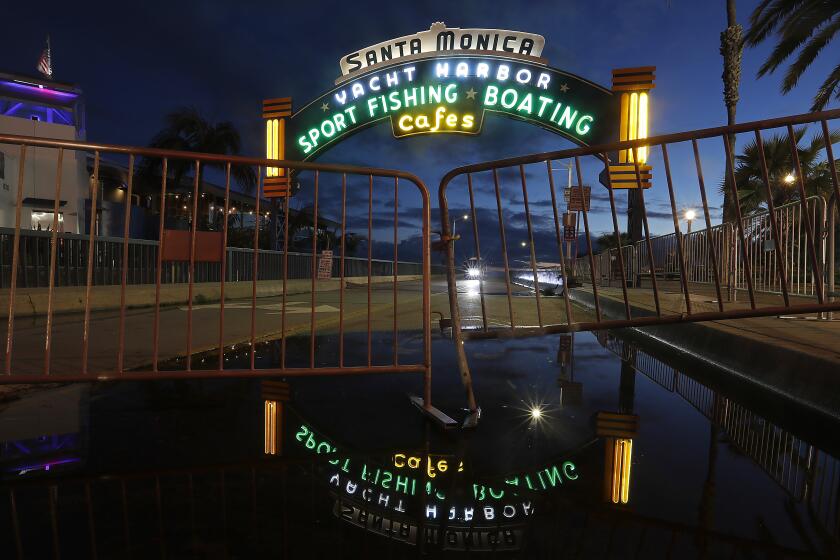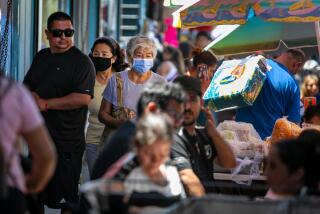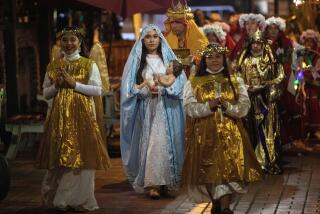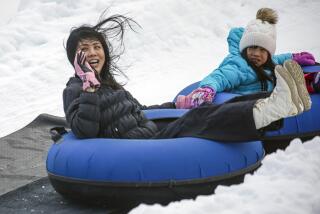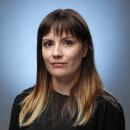A sunny California weekend of social distancing, neighborly love — and some overcrowding
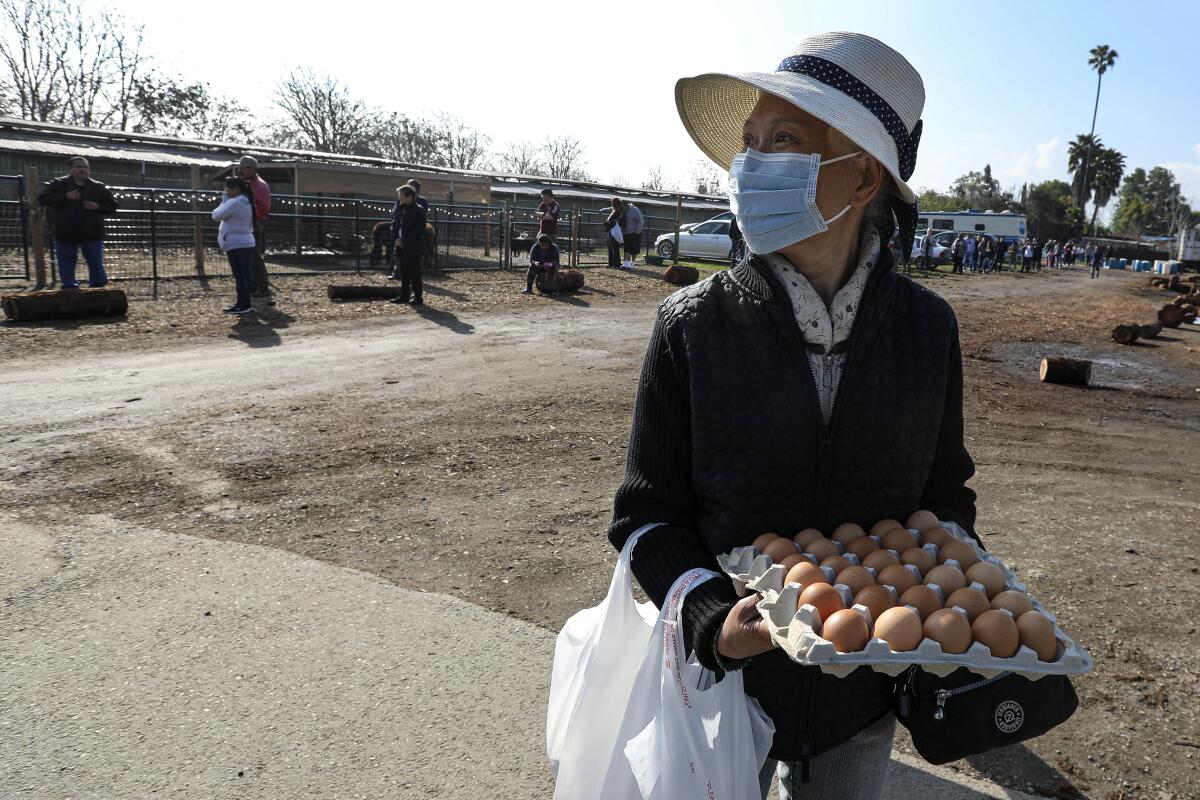
- Share via
The landmark Griffith Observatory may have been closed, but people came by the carloads anyway, smiling and chattering Saturday in the fresh air and sunny skies outside the Hollywood Hills landmark. Walkers packed the sidewalks and trails, wishing one another good health.
From Los Angeles’ Griffith Park to Westside beaches — and from a Granada Hills Starbucks drive-through line, where customers “paid it backward,” to a Laurel Canyon neighborhood, where residents opened their windows for a “You’ve Got a Friend” singalong — Southern California greeted its first weekend of a public health stay-at-home order with pluck, humor and notable kindness.
Overflowing lines at markets and food giveaways continued to ratchet up anxiety and some harsh encounters. The first reported coronavirus infections among Los Angeles police officers, with three testing positive this week, gave reason for added worry. And Los Angeles city officials scrambled to open five more emergency shelters for homeless people.
But most Southern Californians who went looking for solace on the first weekend of a statewide order to stay at home — spurred by the virus that causes COVID-19 — found it in themselves, in their neighbors and in their friends.
Janet Williamson, a lifelong Griffith Park neighbor, watched people filling the public space and said it was good.
“It gives one hope. And hope is something that you can’t buy,” said Williamson, 73. “It has a great value, especially in these times.”

Los Angeles County reported a total of 353 confirmed cases and four deaths as of Saturday night from the novel coronavirus, while California had more than 1,480 known cases and 27 deaths. Public health experts stressed that many more people certainly had been infected but not detected because of limited testing.
The biggest public health emergency in a century appeared to be in its nascent stages, with projections that the illness would spread exponentially. Public health officials warned that, even when seeking exercise and stress relief outdoors, people needed to maintain the six feet of social distancing that they have been recommending for more than a week.
The admonition created an odd dichotomy Saturday: Southern Californians shrank from usually overcrowded tourist locales in favor of open spaces that then became not so open, given the crowds that sought relief from what had come to feel like house arrest.
The Hollywood Walk of Fame, the Venice Beach Boardwalk, the Grove shopping center and Rodeo Drive in Beverly Hills all went mostly bereft of visitors. Crowded streets were mostly open, and parking spaces were free for the taking.
But along the coast in Santa Monica and Pacific Palisades, cars lined up for parking lots at Will Rogers State Beach and nearby Temescal Gateway Park. A few roller skaters and cyclists wore masks and gloves, though none could be seen on the surfers enjoying a stunning blue-sky day, with views all the way to Santa Catalina Island.
Crowds also gathered in Griffith Park and in Runyon Canyon — and, in Northern California, along the Marin County coastline, where the Sheriff’s Office said it recognized “the LARGE amount of people traveling to the coast today and NOT practicing social distancing.” Deputies were working with public health officers to address the issue. The Sheriff’s Office added: “Please stay at home!”
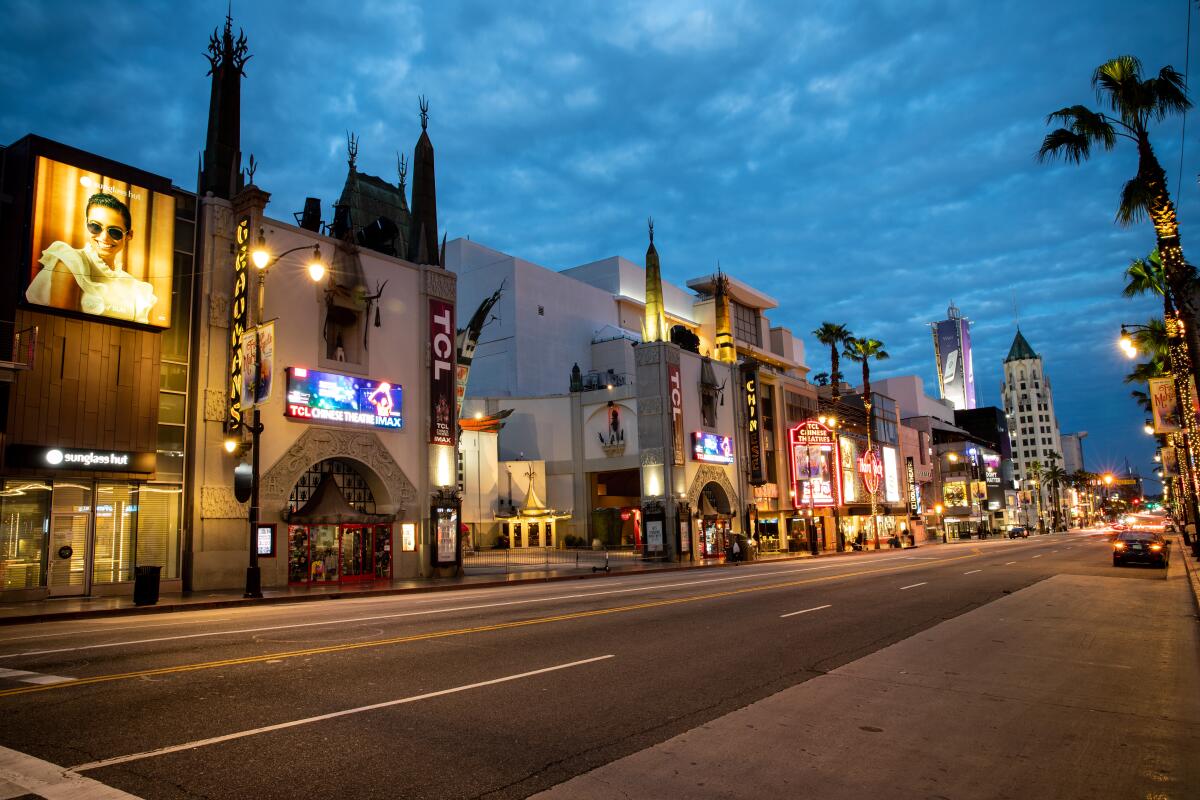
In the Hollywood Hills, the hiking trails of Runyon Canyon Park had become so crowded Saturday afternoon that the park was trending on Twitter, and some people were asking Gov. Gavin Newsom or L.A. Mayor Eric Garcetti to shut down the trails to preserve social distancing.
Around the region, people found other ways to relieve their stress and lighten their neighbors’ loads.
At a drive-through Starbucks in Granada Hills, customers began paying for whoever ordered behind them. For public relations executive Brandon Shaw, that meant he got a $2.75 coffee and paid the $23 total for the car behind him. “It feels right,” Shaw said, “during these troubled times.”
In a South Pasadena neighborhood, Ellen Main posted a note alongside her frontyard garden elf. “Would you like to hear a joke?” it read. Saturday’s offering: “What do you call a pig that does karate? A pork chop.”
Torie Osborn, a 69-year-old aide to county Supervisor Sheila Kuehl, said she had been bombarded by people checking to make sure she was OK. “It’s a riot of love,” she said, “an outpouring of caring.”
Social media helped many others come together, while staying apart.
The Laurel Canyon Residents Facebook group called for members to join a 7 p.m. singalong of Carole King’s “You’ve Got a Friend.” They asked neighbors to open a door or window so the whole community — and onetime home to many rock music greats — would echo with the words of the folk classic.
And scores of Alcoholics Anonymous and other 12-step recovery programs moved their meetings to videoconferencing services such as Zoom.
“I’m sober almost 25 years, and this has been truly incredible to witness and be part of,” said one Los Angeles communications executive, who declined to give her name. The size of the meetings has ranged from 10 to more than 100. One included members from New York, London and Los Angeles. The meetings “give those with experience exposure to those who are new or struggling,” said the exec, providing “experiences, strength, and hope.”
A Highland Park woman created a COVID-19 cooking group on Facebook.
“I created this page to share what I’m making, what I’m thinking about, and what’s challenging and joyful about this time,” said Juliana Nocker-Ferry, inviting others to do the same. “Along with social distancing, we can create social expansion and connection. I send love and strength out to everyone.”
For all the goodwill, a fear of scarcity still provoked anxiety and crowds, especially at supermarkets, where customers lined up before opening, as they had for more than a week.
Outside Honda Center in Anaheim, more than 4,000 needy families received three bags — potatoes, apples and canned goods. The line of cars for the drive-through giveaway got so long that it jammed nearby intersections and triggered a traffic alert by Anaheim police.
“The demand that we are receiving for food is very sad, in a word,” said Harald Herrmann, chief executive of the Second Harvest Food Bank of Orange County. “But we are also seeing the best of humanity at the same time.”
In Chino, a pair of farm-fresh egg suppliers had long lines and expected to sell out by the afternoon. Despite having 64,000 chickens spread across three farms and additional supplies from neighboring farmers, Philip Maust said he could not keep up with the demand.
“It’s been going just berserk,” said Maust of Maust’s California Poultry. “People want their eggs.”
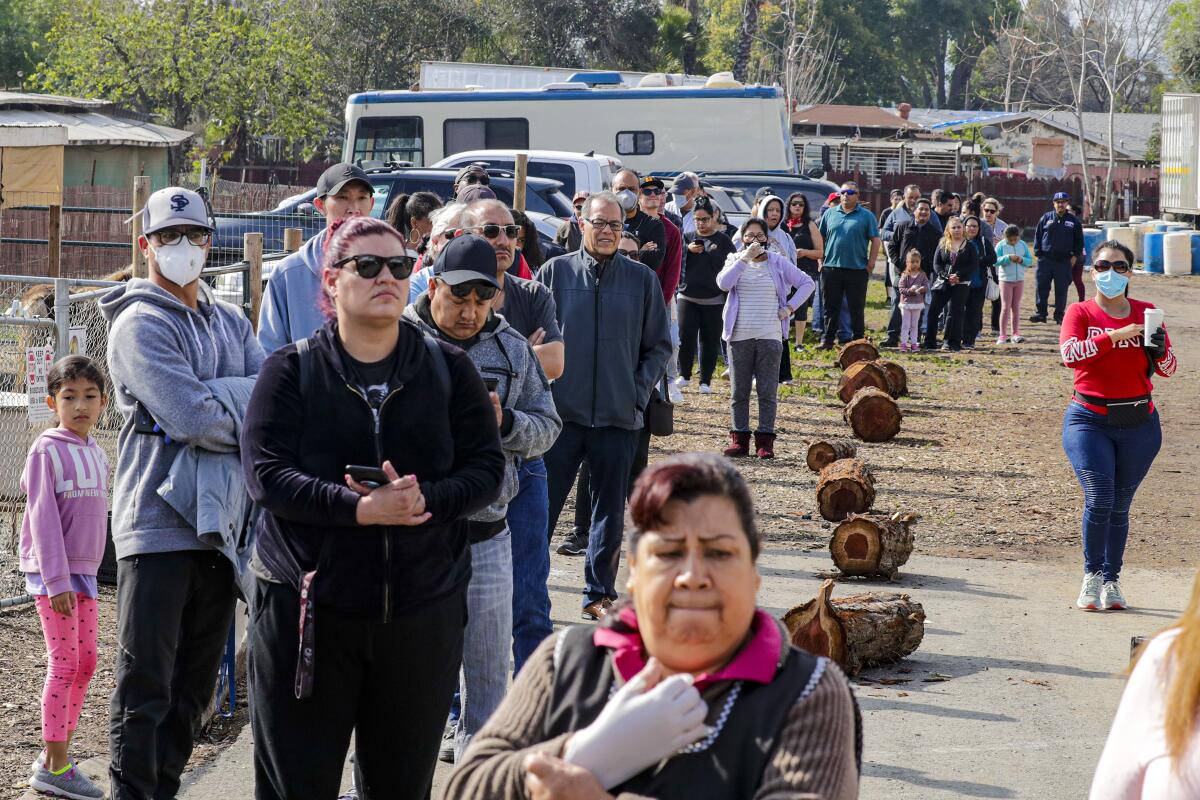
In downtown Los Angeles, the Original Pantry Cafe was closed to dine-in patrons for one of the only times in its nearly 100-year history. Still, the 24-hour restaurant was serving to-go orders Saturday morning to a slow but steady stream of customers.
“We are here for the community,” said operations manager Charlotte Chacon. “We are all in this together.”
Chacon said she spoke daily with the restaurant’s owner, former Los Angeles Mayor Richard Riordan. In a note to customers, Riordan said: “We hope that we can provide in-dining soon. Until then, please be kind and patient as we navigate these changes together.”
While public acceptance of the social limits appeared widespread, a lively debate continued online, with some insisting that restrictions overreached. Many of the critics pointed to a posting by a Stanford researcher that was skeptical about the reported parameters of the coronavirus contagion.
The article by John P.A. Ioannidis, a professor of disease prevention at Stanford University’s School of Medicine, drew 2 million hits this week. But Ioannidis rejected suggestions, including by some conservative media, that the public health restrictions went too far.
“I did not say not to take measures,” Ioannidis said in an email Saturday. “I was clear we need to take measures and act swiftly.” In fact, he said, “I am in shelter-in-place myself and I would never advise anyone to defy the law and break the shelter-in-place.”
Eerie photos and stunning aerial shots show what California looks like under Gov. Newsom’s “stay at home” order.
The sense of fear seemed distant as the shadows lengthened over Santa Monica State Beach on Saturday afternoon. Alan Cohn, 90, and his partner, Elaine Cohen, 80, looked over a scene of people tanning and working out. One man did yoga. A group of four played volleyball.
“Would you believe we’re in the middle of a pandemic right now?” Cohen asked.
The couple bemoaned the loss of their routine. No more improv comedy Tuesdays. Or feeding homeless residents Wednesdays. And no dancing at the Marina City Club on Fridays.
But they were cheered by the people offering to run errands for each other and the vegan restaurant owner who was waiving his delivery fees. They didn’t see themselves getting sick, either.
“Naw,” Cohn said. “I was in the Marines, fighting in North Korea.”
Minutes later, a man sat down next to the couple, asking, “You mind if I sit here and take off my shoes?”
Cohen scooted over. “Just don’t breathe on me.”
Times staff writers Emily Alpert Reyes, Stuart Leavenworth and Richard Winton contributed to this report.
More to Read
Sign up for Essential California
The most important California stories and recommendations in your inbox every morning.
You may occasionally receive promotional content from the Los Angeles Times.
